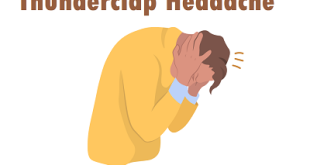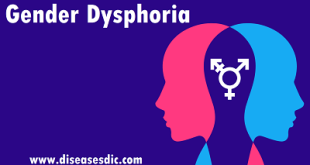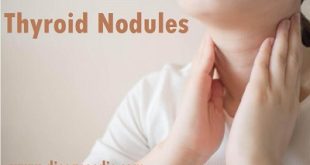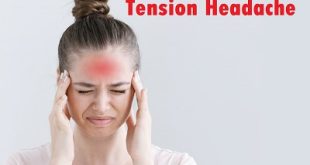Definition
Trichotillomania (TTM), or hair pulling disorder, is a repetitive behaviour that involves an irresistible urge to repeatedly pull out one’s own hair. Trichotillomania belongs to a group of disorders known as body-focused repetitive disorders, in which individuals compulsively damage their physical appearance. Individuals with trichotillomania may pull out hair from the scalp, eyebrows, eyelashes and other areas of the body, and over time, this can lead to bald patches and thinning hair.
Trichotillomania is included in the diagnostic and statistical manual of mental disorders, fifth edition, or DSM-5, in the group of obsessive-compulsive disorders and related to skin picking disorders, in which individuals pull, pick, scrape, or bite their hair, skin, or nails, resulting in damage to the body.
Trichotillomania most commonly presents in individuals between the ages of 10 and 13. Although trichotillomania affects those assigned male at birth and those assigned female at birth equally in childhood, it typically affects individuals assigned female at birth more frequently during adulthood.
The History of Trichotillomania
It’s thought that the Trichotillomania name was coined by French dermatologist François Henri Hallopeau (1842–1919) in 1889, who combined three Greek words to describe this condition: thrix (hair), tillein (pulling), and mania (madness), although in Hallopeau’s native French tongue, the word was spelled ‘trichtillomanie’. Hallopeau used it to describe a condition exhibited by a young male patient who had torn hair out in tufts. Although the first reference to it may have come from the Greek philosopher Epictetus (c.60–c.117 AD) in his book “The Discourses” in 101 AD: “Indeed I think that the men who pluck out their hairs do what they do without knowing what they do“. In a later reference to a character, “Much from his head he tore his rooted hair. And what does he say himself? ‘I am perplexed,’ he says, ‘and disturbed I am,’ and ‘my heart out of my bosom is leaping“. The American Psychiatric Association first recognised Trichotillomania as a mental disorder in 1987.
Types of Trichotillomania
According to some authors, there are two forms of trichotillomania: (a) acute form and (b) chronic form.
Acute form: This form usually involves children or adolescents and is more likely to be c stress-induced habit response. Usually scalp is involved, initially asymmetrically, later may involve both sides of the scalp and in time the eyebrow: and eyelashes. The clinical course is frequently episodic with periods of complete remission occurring 2-3 times a year. The form is reported to be benign and self- limited.
Chronic form: This form usually involves adults and older patients and is associated with significant psychopathology. Usually involves the scalp, face and also secondary sexual hairs. The clinical course is progressive and chronic with a poorer prognosis.
In many patients, a specific time and location are reserved for hair pulling. Some of the high-risk situations for hair pulling include watching television, reading, talking on the phone lying in bed, driving and writing.
Epidemiology
Trichotillomania occurs more frequently in females. The lifetime prevalence is 3.4% for women and 1.5% for men. The typical age of onset is between 5 and 12 years or early childhood to adolescence, but it may occur in any age.
Pathophysiology
The disease is a clinical diagnosis but can be confirmed by punch biopsy of the scalp.[8] Typically the hands are used to pull the hair, but tweezers or other devices can be used. The hair from the head is the most common to be pulled but can be from anywhere. Some individuals exhibit the Friar Tuck sign with hair loss in a distinct area at the crown and maintenance of hair in temporal and occipital regions. There can be a ritualistic manner of choosing the hair and the act of pulling, for example searching for the coarse hair at the beginning of the hairline after combing hands through the hair. After the hair is pulled, some individuals will inspect it and eat all or portions of the hair.
If eating the hair is involved, then the patient is at risk for a trichobezoar. If the patient suffers pain, nausea, vomiting, or constipation, trichobezoar should be sought because it can potentially get large enough to cause bowel obstruction or perforation. Important to note is that the hair-pulling may be considered automatic, done when the patient is not aware or focused, or completed when the patient is solely focused on the pulling behavior.
Causes of Trichotillomania
It’s not clear what causes trichotillomania, but experts recognize a few main theories behind why some people may have hair-pulling disorder, including:
- Familial Component: Studies have shown that hair-pulling disorder runs in families.
- Genetic Component: Variants of the SAPAP3 gene is linked to the development of early-onset OCD.
- Brain Changes: Results of brain imaging showed people with trichotillomania have certain brain changes that correlate with the disorder.
- Emotional Regulation: Studies show increased hair-pulling behaviours associated with larger decreases in feelings of sadness, boredom, and anger.
The average onset of this disorder is between 10 and 13 years old, and hair-pulling disorder has the potential to be lifelong. People who are prone to stress or who have high levels of stress in their life are at a higher risk of developing trichotillomania.
The target areas of hair pulling
Classification of Trichotillomania
Trichotillomania falls under a category of disorders called Body-Focused Repetitive Behaviors (BFRBs), yet it is often misdiagnosed as other conditions. The most common misdiagnosis is OCD, followed closely by Body Dysmorphic Disorder (BDD) and to some extent Non-suicidal Self-Injury (NSSI).
Obsessive Compulsive Disorder (OCD)
It is true that some people with OCD pull their hair and some people with trich have OCD. It is also true that trich is considered as part of the obsessive-compulsive spectrum of disorders. However, the primary difference is that a person with trich is driven by the behavior of pulling hair, not intrusive or obsessive thoughts. Whatever drives the urge, once hair is pulled, the urge is satisfied.
On the contrary, a person with OCD may feel a compulsion to pull hair, but it is fueled by intrusive or obsessive thoughts which are not relieved once the hair is pulled. Also, trichotillomania is classified as a repetitive motor response whereas the behaviors of OCD are compulsive rituals that must be completed to satisfy an obsession. The age of onset is different as well.
Trich tends to start in early adolescence while OCD starts in late adolescence. Each condition responds to treatment differently. Because of the behavioral focus of the disordered action, the evidence-based treatment for trich is Habit Reversal Training whereas OCD treatment is exposure and response prevention. Selective serotonin reuptake inhibitors (SSRIs) help in treating OCD but show very little effectiveness for trich.
|
Trich |
OCD |
|
|
Body Dysmorphic Disorder (BDD)
A person with body dysmorphic disorder becomes obsessed or preoccupied with a perceived defect in their physical appearance. In some cases, BDD can result in excessive hair pulling, but the goal of the behavior is to correct the perceived defect. For someone with trich, the goal is not to correct a defect.
Non-suicidal Self-Injury (NSSI)
When a person injures themselves without suicidal intent, it is called non-suicidal self-injury (NSSI) and often includes cutting, burning, or scratching. NSSI is thought to serve as a way to alleviate overwhelming negative emotion, as self-directed anger or punishment, or to influence others. While there are similarities between NSSI and focused trich, NSSI is a conscious decision to harm oneself as opposed to the compulsive urge to pull hair.
Symptoms of Trichotillomania
Symptoms most often begin before age 17. The hair may come out in round patches or across the scalp. The effect is an uneven appearance. The person may pluck other hairy areas, such as the eyebrows, eyelashes, or body hair.
These symptoms are most often seen in children:
- An uneven appearance to the hair
- Bare patches or all around (diffuse) loss of hair
- Bowel blockage (obstruction) if people eat the hair they pull out
- Constant tugging, pulling, or twisting of hair
- Denying the hair pulling
- Hair regrowth that feels like stubble in the bare spots
- Increasing sense of tension before the hair pulling
- Other self-injury behaviors
- Sense of relief, pleasure, or gratification after the hair pulling
Most people with this disorder also have problems with:
- Feeling sad or depressed
- Anxiety
- Poor self-image
Risk factors
Trichotillomania can affect children, adolescents, and adults of all genders. However, it tends to occur more often in women than men, with a ratio of 9 to 1.
Risk factors associated with developing trichotillomania can include:
- having a mental health condition such as anxiety, OCD, or depression
- being female
- being an adolescent
- experiencing a stressful situation
This condition is thought to be underreported.
Trichotillomania complications
Certain complications of trichotillomania may negatively impact your life. Common complications include:
Skin and Hair Injury – You may experience temporary or permanent damage to your body. Some individuals with the disorder experience scarring, bleeding, and infections.
Emotional Discomfort – You may feel guilt, shame, powerlessness, anger, loneliness, low self-esteem, or depression because of your condition. You may also experience self-hatred that motivates unhealthy alcohol and drug use.
Social and Professional Problems – Individuals with the condition often avoid situations where their disorder might be discovered by friends, family, and co-workers. Therefore, these individuals may stay away from social outings and close relationships.
Hairballs – When someone consumes enough hair over several years, the hair may accumulate in their digestive tract. Hairballs can result in discomfort, vomiting, intestinal issues, and sometimes even fatality.
How to diagnose trichotillomania?
An evaluation to determine if you have trichotillomania may include:
- Examining how much hair loss you have
- Asking questions and discussing your hair loss with you
- Eliminating other possible causes of hair pulling or hair loss through testing determined by your doctor
- Identifying any physical or mental health problems that may be associated with hair pulling
- Using the diagnostic criteria in the Diagnostic and Statistical Manual of Mental Disorders (DSM-5), published by the American Psychiatric Association
Trichotillomania Treatment
While there is no medication for trichotillomania exclusively, antidepressants, NACs and naltrexone can help with certain symptoms. Therapy is also an effective form of treatment for trichotillomania. Common therapies include:
- Habit reversal training (HRT): This training is one of the most commonly used techniques for treating trichotillomania. It bases its approach to building personal awareness of hair pulling and identifying hair-pulling triggers. HRT addresses these triggers, so the individual can develop new, healthier behaviors to respond to common triggers instead of engaging in hair pulling.
- Cognitive Behavioral Therapy (CBT): This therapy may be particularly effective for trichotillomania. While similar in approach to habit-reversal training, CBT focuses more on changing the thoughts associated with hair pulling and allowing this change to influence behaviors.
- Acceptance and Commitment Therapy (ACT): It helps people with trichotillomania break the bond between the craving to pull hair and the act of pulling. The goal is for the person to learn to accept their hair-pulling urges without acting on them.
Hypnotherapy for trichotillomania has not been proven to be clinically effective but may be helpful for some people. This approach often is more successful with younger patients. A trichotillomania treatment plan is likely to include a combination of therapies that address symptoms of trichotillomania along with any co-occurring disorders.
Training methods are also used for patients with Trichotillomania, such as
Contending response training: The individual works on replacing the hair pulling habit with an alternate habit. This training is useful for children and teens.
Inspiration and consistency training: The individual participates in exercises and practices that help them to remember the significance of staying with the treatment. This may incorporate accepting praise from family members for progress made during treatment.
Relaxation training: The individual practices unwinding strategies, for example, reflection and profound relaxation. These methods of training help them to ease their pressure and stress and ultimately reduce the hair pulling.
Generalization training: The individual practices their new abilities in various circumstances to get programmed in their daily routine.
Family therapy: It is especially valuable when a kid or youngster has a significant issue that is influencing the other family members, as may be the case with Trichotillomania. Your family can assist you in addressing the issue that is making you pull your hair. In this treatment, a counsellor will meet the entire family and study their perspectives and connections to comprehend the issues the family is having. It encourages relatives to discuss the issues better with one another.
Hypnosis: It is also a proven treatment method which can be utilized to adjust your condition of consciousness. The hypnotist would then be able to recommend a solution like changing your conduct. While you are in this modified state, you might be bound to acknowledge the recommended changes and quit the habit of pulling your hair.
Medications for treatment of TTM
Due to superficial similarities of TTM and OCD, OCD medications have been tried, especially Serotonin Re-uptake Inhibitors (SRIs) such as:
- Clomipramine (Anafranil)
- Fluoxetine (Prozac)
- Sertraline (Zoloft)
- Paroxetine (Paxil)
- Other medications tried with some success:
- Lithium (Lithobid, Eskalith, etc.)
- Valproate (Depakote)
- Buproprion (Wellbutrin)
- Tricyclic antidepressants (eg. Elavil, Pamelor, Nopramin)
Usually, medications require at least 6 weeks at the therapeutic or maximum dose tolerated to know if it will work for the individual patient. If medication does not help, it should be discontinued. If medication is only partially effective, other medications may be added – with careful supervision from a psychiatrist, who is an expert in OCD spectrum.
Hair regrowth after treatment
Can trichotillomenia be prevented?
Trichotillomenia is disease in which you have an urge to pull your hair as it is a type of impulse control disorder but it is not proven that it can be prevented but treatment can help if taken as soon as the symptoms start to occur.
How to stop trichotillomania?
These are the steps which can stop trichotillomania:
- Joining support groups
- Buy fidget toy
- Meditation
- Avoiding caffeine at the time of sleep
- Try stimulating your senses
- Brush your teeth if you are having an urge to pull your hair
 Diseases Treatments Dictionary This is complete solution to read all diseases treatments Which covers Prevention, Causes, Symptoms, Medical Terms, Drugs, Prescription, Natural Remedies with cures and Treatments. Most of the common diseases were listed in names, split with categories.
Diseases Treatments Dictionary This is complete solution to read all diseases treatments Which covers Prevention, Causes, Symptoms, Medical Terms, Drugs, Prescription, Natural Remedies with cures and Treatments. Most of the common diseases were listed in names, split with categories.







